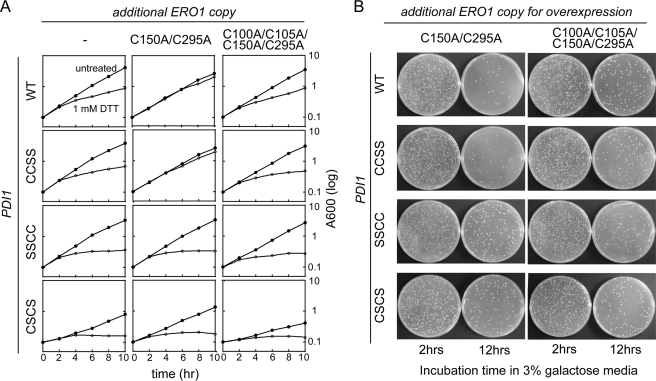FIGURE 7.
Disulfide relay system between Ero1p and the a domain of Pdi1p. A, the de-regulated Ero1p(C150A/C295A) mutant requires a functional Pdi1p a domain to suppress growth defects observed upon addition of 1 mm DTT. Yeast strains CKY1046–1049 were transformed with Ero1p(C150A/C295A) (pCS456) or the catalytically inactive Ero1p(C100A/C105A/C150A/C295A) (pCS483). Yeast strains were cultured in SMM at 30 °C, and growth was followed by light scattering (at 600 nm). At 2 h, DTT was added to half the cultures to a final concentration of 1 mm. B, cellular toxicity by overexpressed Ero1p(C150A/C295A) is alleviated by disruption of the Pdi1p a domain. CKY1046–1049 were transformed with a plasmid encoding Ero1p(C150A/C295A) (pCS452) or catalytically inactive Ero1p(C100A/C105A/C150A/C295A) (pCS504) under the control of the GAL promoter. After 2 and 12 h of growth in SMM with 3% galactose, 10−4 A600 unit of cells were spread onto SMM plates and incubated for 2 days at 30 °C. Cell viability was calculated by comparing colony forming units between cells expressing Ero1p(C150A/C295A) and cells expressing Ero1p(C100A/C105A/C150A/C295A) 12 h after induction.

